Lumbar osteochondrosis is one of the most common and often diagnosed types of osteochondrosis, which is also known as "sciatica."The frequency of this disease is very large - about 82% of cases, patients who go to the doctor with complaints of severe back pain are diagnosed with radiculitis in the lumbosacral region.
Disease Description
Osteochondrosis in the sacral or lumbar region occurs with equal frequency in women and men, most often in middle age and the elderly.Medical practice shows that this particular disease is among the main causes of temporary or permanent disability, and in some cases, disability.That is why the treatment of pathology must be treated with great care, because osteochondrosis can pose a serious danger to human health.
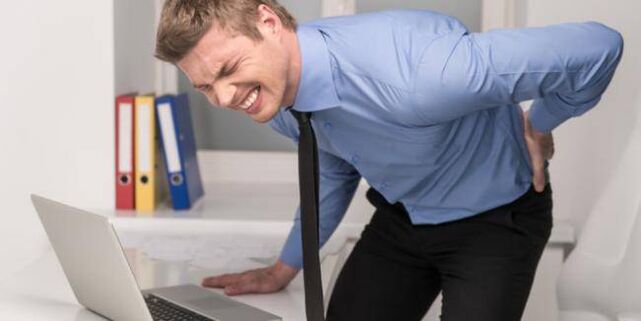
The lumbar region is the name given to the part of the spine that consists of 5 vertebrae designed to connect the sacral and thoracic regions.Osteochondrosis of the lumbar spine is a pathological change, in which there is a rapid decrease in flexibility and changes in the natural anatomical structure of the intervertebral disc.Their deformation gradually occurs.
The basis of radiculitis is the slow destruction of the vertebrae, loss of moisture and elasticity, and a decrease in the ability to absorb shock.Gradually, the space between the vertebrae decreases, the intervertebral disc can harden, resulting in pinched nerve roots.This process is accompanied by severe and spasmodic pain in the lower part.
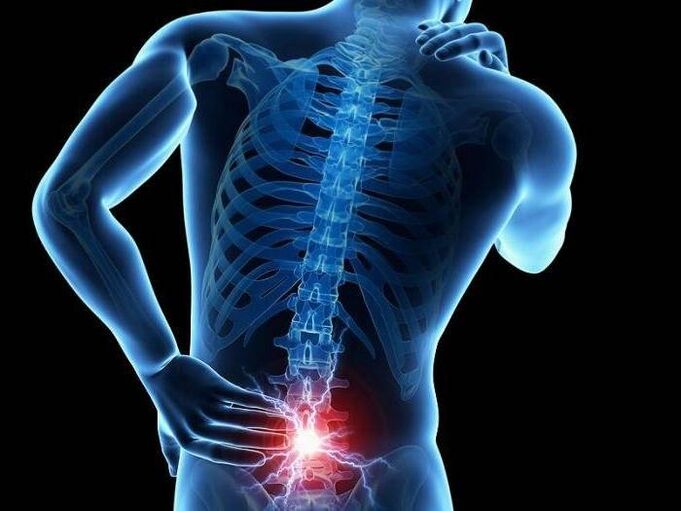
How dangerous is osteochondrosis, its stages?
The process of disease development is accompanied by degenerative-dystrophic changes, which over time can cause complications such as protrusions and herniated discs.Such degenerative changes can be the main cause of leg paralysis.
Lumbar osteochondrosis can be accompanied not only by the development of protrusion or herniation of the intervertebral disc, but by other, no less serious diseases of internal organs and systems.One of the most common complications is pinching of the sciatic nerve, which is accompanied by intense pain in the lower back and a feeling of numbness in the limbs.
Radiculitis can also cause other serious consequences - spondyloarthrosis, osteophytosis, spondylosis, stenosis, lameness, curvature of the spine.This disease can also cause pathological processes in the genitourinary and reproductive fields;in women, inflammation of the uterus and ovaries;In men, it causes various problems with potency.
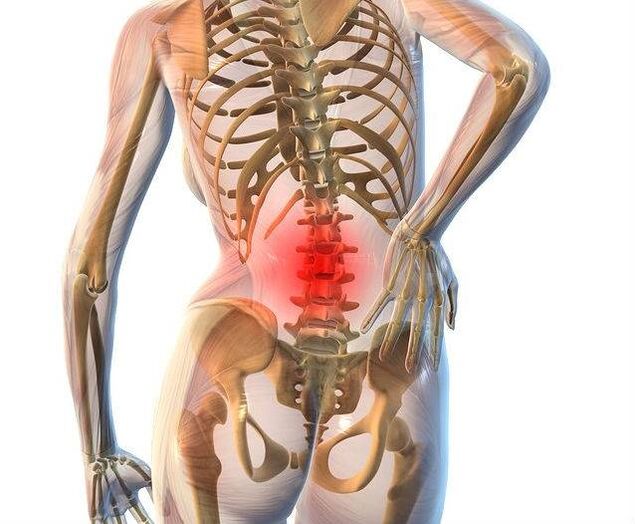
Osteochondrosis of the lumbar spine is divided into several stages:
- The first stage of radiculitis is the "mild" stage, where the pain in the lumbar or sacral region is still mild and only appears during physical work.In the first stage, the process of destruction of the vertebrae is at an early stage.
- The second stage is accompanied by active destruction of the fibrous ring and a decrease in the intervertebral space.This leads to pinched nerves and causes severe pain.
- The third stage - the destruction of the fibrous ring ends, an intervertebral hernia appears.The spine feels deformed and twisted, losing its normal anatomical shape.
- The fourth stage of the disease is the most severe.At this stage, a person can no longer walk normally;Often the fourth stage ends in disability.
Symptoms of lumbar osteochondrosis
Symptoms and treatment are determined depending on the stage of development of the disease.
In the first stage, a person, as a rule, does not pay attention to the first signs of this disease.When making sharp turns or walking, minor pain and discomfort may occur in the lumbar region.In addition, pain often appears after sitting or standing in one place.
The main danger in this period is that the symptoms are not pronounced enough, one can simply ignore them, because osteochondrosis is rapidly developing.
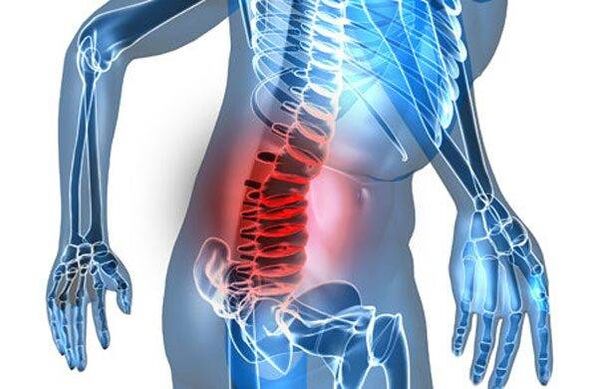
The second stage of radiculitis is accompanied by a decrease in clearance between the vertebrae, and, accordingly, severe pain in the lower part and sacrum, which can radiate to the groin and lower part.
In the third stage, osteochondrosis is characterized by significant symptoms - intense pain, spasms in the back, reduced vertebral mobility, and the onset of pathology of internal organs and systems.This can result in problems with the genitourinary system and gynecological inflammation.
The symptoms of the fourth stage, the most severe of the disease are expressed in the form of a significant deformation of the spine, which can bend to the side or forward, constant pain, which is severe, which is greatly intensified when trying to make physical movements.Also at this stage, muscle and ligament swelling, loss of sensitivity, and numbness from the lower leg may occur.
Modern treatment methods
Treatment of osteochondrosis of the lumbosacral spine is recommended to be carried out comprehensively - with the help of drugs, physiotherapy methods, exercise therapy, and herbal medicine.In the most severe cases, surgical treatment is used.
Treatment aims to achieve goals such as:
- Reduces pain in the lumbar and sacral areas.
- Removing the inflammatory process in the diseased area.
- Elimination of pathological tension in muscle tissue.
- Activation of blood circulation in the back lumbosacral region.
- Increases the mobility of the vertebrae, normalizes sensitivity in the lower part of the legs.
Medicinal treatment of radiculitis is a mandatory element in the complex therapy of osteochondrosis of the lumbosacral spine.For therapeutic purposes, some of the most commonly prescribed drugs are:
- Painkillers are used to relieve pain.But we must remember that by eliminating pain, analgesics do not treat the cause of the disease.
- In most cases, doctors prescribe chondroprotectors designed to improve metabolic processes in cartilage fibers and prevent their deformation.
- Nonsteroidal anti-inflammatory drugs—used to relieve pain and swelling, release pinched nerve endings, and relieve the inflammatory process in the affected tissue.
- Medicines from the muscle relaxant category are used to normalize muscle tone.
- In some cases, drugs with a diuretic effect may be prescribed to help relieve swelling in the affected tissue.
- To activate blood circulation in the lumbosacral spine, drugs with vasodilating properties can be prescribed.
- Calcium supplements are often used to increase the strength of bone tissue and cartilage.
In the first and second stages of the disease, drugs for external use, produced in the form of ointments, creams, and lotions, are very effective.
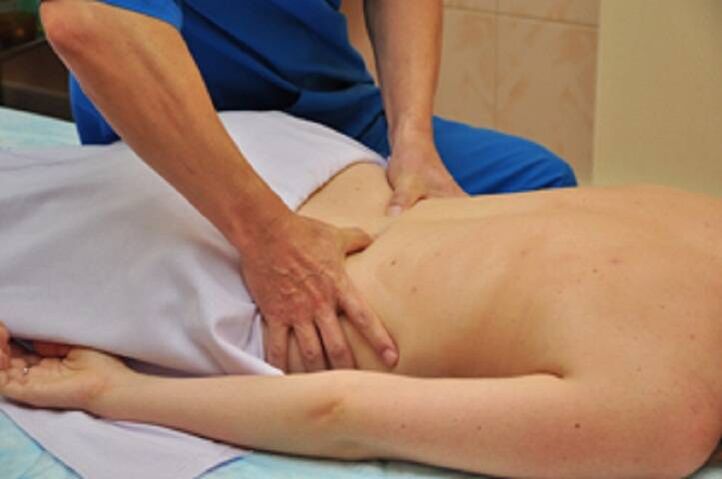
Traditional method
Traditional medicine offers many different recipes for the effective treatment of osteochondrosis.The most effective method is considered to be a variety of rubbing, massaging, and compressing.But keep in mind that traditional methods can be effective only in the early stages of the disease.
- One of the most famous recipes is cabbage compression.To do this, all the veins are cut from the surface of the cabbage leaves, after which the leaves are slightly beaten with a hammer and applied to the bottom.The compress is fixed with a wide scarf, handkerchief or gauze.It is recommended to change the cabbage leaves several times a day.
- Grind 3-4 large cloves of garlic using a garlic press, squeeze the juice out of the resulting mass through cheesecloth, separately melt 100 g of lard in a water bath.Mix the resulting components in a ratio of 1: 2 and stir.This composition is used for therapeutic massage and rubbing.
- A spoonful of ground red pepper should be poured into 250 ml of vodka, after which the container with the medicine should be left in a dry and dark place for a week.Folk remedies are used for rubbing.
- Horseradish Rub is prepared in the same way.Radish root, grated, squeezed, and the resulting juice mixed with the same amount of vodka.The mixture is used for regular scrubbing.
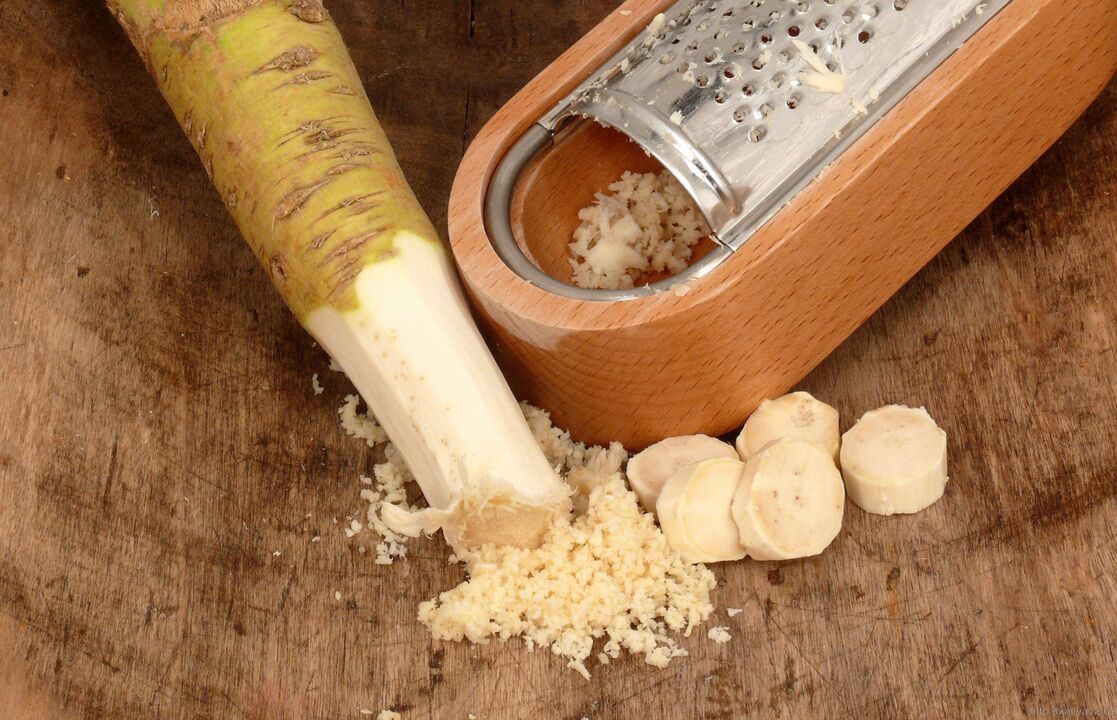
Exercise Therapy (Physical Therapy)
Exercise therapy for osteochondrosis of the lumbar spine allows you to relieve pain, improve the condition of muscles and cartilage tissue, restore mobility of the spine, significantly strengthen the musculoskeletal corset, and "unload" the lumbar spine.
Exercises for osteochondrosis can be done only if the person is not bothered by severe pain in the back.Exercises can be very varied - bending forward and backward, left and right from a standing position, raising your hands, behind your head and bending your abdominal muscles.At the same time, absolutely all therapeutic exercises are performed under the supervision of a specialist.
What to do if you suspect osteochondrosis?
Radiculitis is a very dangerous disease that most often begins without a person noticing.The danger of radiculitis lies in the fact that if there is no necessary treatment, this disease can have the most unpleasant consequences - even paralysis of the legs and curvature of the spine.
That is why, when the first signs of the disease appear, it is necessary to consult an orthopedic doctor who will prescribe the optimal course of treatment.Remember, the earlier treatment is started, the sooner you can achieve positive results and return your spine to health.






















